25 Easy Sewing Projects for Kids and Teens
Are you ready to dive into the colorful world of sewing? Whether you’re a parent looking to spark creativity in your children or a teen eager to explore a new hobby, sewing offers an exciting opportunity to create something unique and personal. This article showcases 25 easy sewing projects that are perfect for kids and teens, allowing them to express their creativity while developing valuable skills. From simple crafts to more involved designs, there’s something here for everyone!
Imagine the joy on your child's face as they complete their first project—a cute little pouch or a funky pillowcase! These projects not only provide a sense of accomplishment but also enhance fine motor skills, patience, and problem-solving abilities. Plus, sewing can be a fantastic way to unwind and destress. It's almost like meditation, but with a needle and thread! So, let’s get started on this fun journey of creativity and skill-building.
Sewing is so much more than just stitching fabric together; it's an art form that nurtures creativity and patience in young minds. When kids engage in sewing, they learn to focus their attention, follow instructions, and think critically. These skills are not only essential for crafting but also translate into other areas of life, such as schoolwork and personal projects. Plus, the thrill of creating something from scratch is incredibly rewarding! Who wouldn’t want to wear a shirt they made themselves or gift a handmade bag to a friend?
Before embarking on your sewing adventure, it’s crucial to have the right tools at your fingertips. Here’s a quick rundown of essential sewing supplies:
- Needles: Choose needles that are appropriate for the fabric type you’re working with.
- Thread: Make sure to match your thread color with your fabric for a polished look.
- Fabric: Start with cotton or felt, as they are easy to work with.
- Scissors: Safety scissors are a must for younger kids.
- Measuring tape: Accurate measurements are key to successful projects.
Having these tools ready will ensure a smooth and enjoyable sewing experience.
Now, let’s talk about some beginner-friendly projects that are not only easy to follow but also fun to make. Here are a few ideas:
- Fabric bookmarks: Perfect for book lovers, these can be personalized with different fabrics and designs.
- Pillows: A simple square pillow can be a great first project, allowing kids to practice straight stitching.
- Drawstring bags: These are practical and can be used for storing toys or school supplies.
Each of these projects will help kids build confidence as they learn the basics of sewing. Plus, they can show off their creations to friends and family!
Choosing the right fabric can make or break a project. Kids and teens often gravitate towards vibrant colors and fun patterns that reflect their personalities. Fabrics like cotton, fleece, and felt are not only easy to work with but also come in a plethora of designs, from whimsical prints to chic solids. When selecting fabric, consider:
- The age and skill level of the sewer.
- The purpose of the finished project.
- Personal preferences in color and design.
Letting kids choose their fabric can make the sewing experience even more enjoyable and personal.
Sewing can be a delightful way to celebrate different seasons and holidays. Imagine creating festive decorations or gifts that bring joy to family and friends! Here are some seasonal project ideas:
- Halloween costumes: Simple capes or masks can be a hit!
- Christmas stockings: Personalize them with names and fun fabrics.
- Spring-themed pillow covers: Bright florals can liven up any room.
These projects not only allow for creativity but also create lasting memories as families come together to celebrate.
In today’s world, teaching kids about sustainability is more important than ever. Upcycling projects can be a fantastic way to encourage creativity while promoting environmental awareness. Consider using old clothing or fabric scraps to create new items, such as:
- Patchwork quilts: Combine different fabric pieces to create a cozy blanket.
- Reusable shopping bags: A great way to reduce waste while being stylish.
- Fabric coasters: Use leftover fabric to make eco-friendly coasters.
These projects not only reduce waste but also teach kids the value of resourcefulness.
Sewing can be a fantastic social activity! Whether in a classroom setting or at home with friends, group sewing projects foster teamwork and collaboration. Consider organizing a sewing day where kids can work together on:
- Community quilts: Each child can contribute a square.
- Costumes for a school play: Team up to create a cohesive look.
- Gift bags for charity: Sew together to give back to the community.
These activities not only result in beautiful creations but also strengthen friendships and build a sense of community.
As kids grow, their sewing skills can evolve too! Teens may want to tackle more challenging projects that allow for self-expression. Consider introducing them to:
- Garment sewing: Creating their own clothes can be empowering.
- Quilting: This intricate craft can become a lifelong hobby.
- Bag making: Designing unique bags can be both fun and functional.
These advanced projects encourage teens to push their boundaries and explore their personal style through sewing.
1. What age is appropriate for kids to start sewing? Many children can start sewing as young as 6 or 7, especially with simple projects and supervision.
2. Do I need a sewing machine? While a sewing machine can speed up the process, many beginner projects can be done by hand.
3. How can I encourage my child to sew? Create a fun and inviting sewing space, and let them choose projects that interest them.
4. Are there any online resources for kids learning to sew? Yes! There are numerous tutorials and videos available that cater to young learners.
So, grab your fabric and thread, and let the sewing adventures begin!
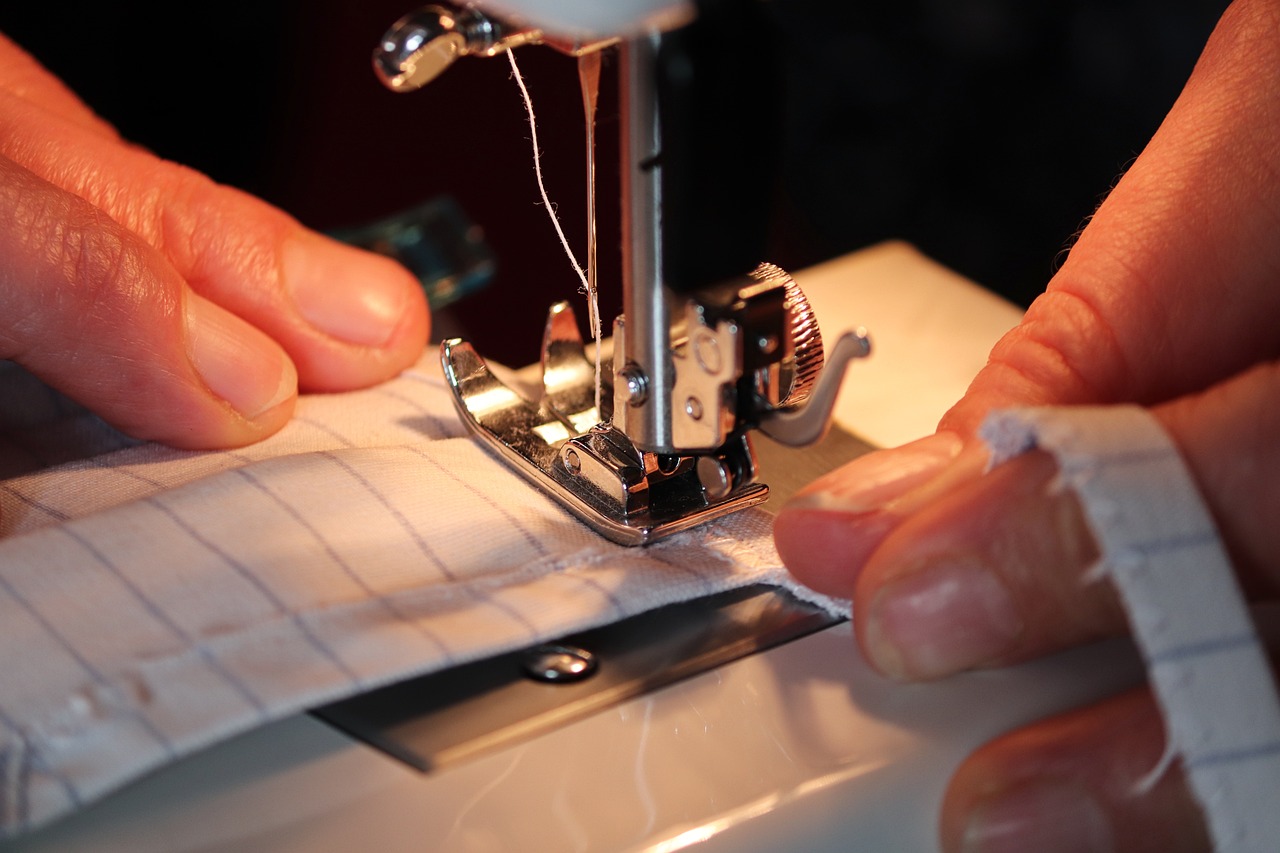
Introduction to Sewing for Kids
Sewing is not just a fun pastime; it’s a valuable skill that can open up a world of creativity for children. Imagine your child transforming a simple piece of fabric into a unique piece of art or a functional item! This hands-on activity fosters creativity and patience, allowing kids to express themselves in ways they never thought possible. As they learn to sew, they develop fine motor skills that are essential for their overall growth. Think of it as a workout for their fingers—each stitch is a step towards better coordination and dexterity.
But that’s not all! Sewing also teaches kids the importance of perseverance. When they encounter challenges, such as a tangled thread or a tricky pattern, they learn to problem-solve and keep trying until they succeed. This ability to stick with a task until completion can translate into other areas of their lives, such as school projects or sports.
Furthermore, sewing provides a sense of accomplishment. When children complete a project, they can proudly show off their creation to family and friends. It’s like a little trophy that they made themselves! This boost in self-esteem is incredibly important during their formative years, as it encourages them to take on new challenges with confidence.
In addition to boosting self-esteem, sewing can also be a fantastic way for kids to bond with family and friends. Imagine a cozy afternoon spent stitching together, sharing stories, and laughing over the occasional mishap. It’s a wonderful way to create lasting memories while learning a skill that will benefit them for years to come.
So, whether your child is a budding fashion designer or just looking for a fun way to spend an afternoon, sewing can be the perfect outlet. It’s an adventure waiting to unfold, and all it takes is a little thread, fabric, and imagination!

Essential Sewing Tools
Sewing is a delightful journey that begins with the right tools. Imagine embarking on a treasure hunt, where each tool is like a key that unlocks your creative potential. Before diving into your sewing projects, it’s essential to gather the necessary supplies that will make your experience smooth and enjoyable. Whether you're a child picking up a needle for the first time or a teen looking to refine your skills, having the right equipment can make all the difference.
First and foremost, you'll need needles. These come in various sizes and types, so it’s crucial to choose the right one for your project. For lightweight fabrics, opt for a smaller needle, while thicker materials will require a sturdier needle. Next, thread is your lifeline, connecting all the pieces of fabric together. A good quality thread can prevent fraying and breakage, ensuring your creations stay intact. Don't forget to select colors that complement your fabric; after all, who doesn't love a pop of color?
Speaking of fabric, that’s another essential component of your sewing toolkit. The fabric you choose can set the tone for your project. From cotton to fleece, each type offers different textures and patterns, allowing for endless possibilities. If you're unsure where to start, cotton is a fantastic choice for beginners due to its versatility and ease of handling.
Another must-have is a pair of safety scissors. Safety scissors are perfect for younger kids, as they are designed to prevent accidents while still providing a clean cut. As skills improve, transitioning to regular fabric scissors will be necessary. Remember, a sharp pair of scissors is your best friend in the sewing world, making cutting fabric a breeze.
To help you visualize these essential tools, here’s a quick table summarizing them:
| Tool | Purpose |
|---|---|
| Needles | To stitch fabric together; available in various sizes for different materials. |
| Thread | To connect pieces of fabric; comes in various colors and materials. |
| Fabric | The material you will sew; choose based on your project and skill level. |
| Safety Scissors | For safe cutting of fabric, ideal for beginners. |
Lastly, don’t underestimate the power of a measuring tape and pins. A measuring tape ensures that your pieces are cut accurately, while pins help hold everything in place as you sew. Think of them as the unsung heroes of your sewing toolkit, quietly ensuring that your projects come together seamlessly.
In conclusion, gathering these essential sewing tools will not only prepare you for your sewing journey but also inspire confidence as you create. So, gear up, gather your supplies, and get ready to unleash your creativity!
Q: What is the best fabric for beginners?
A: Cotton is often recommended for beginners due to its ease of handling and wide variety of patterns.
Q: Do I need a sewing machine to start sewing?
A: No, you can start with hand sewing, which is a great way to learn the basics before moving on to machine sewing.
Q: How can I ensure my sewing projects are successful?
A: Start with simple projects, follow instructions carefully, and practice regularly to improve your skills.
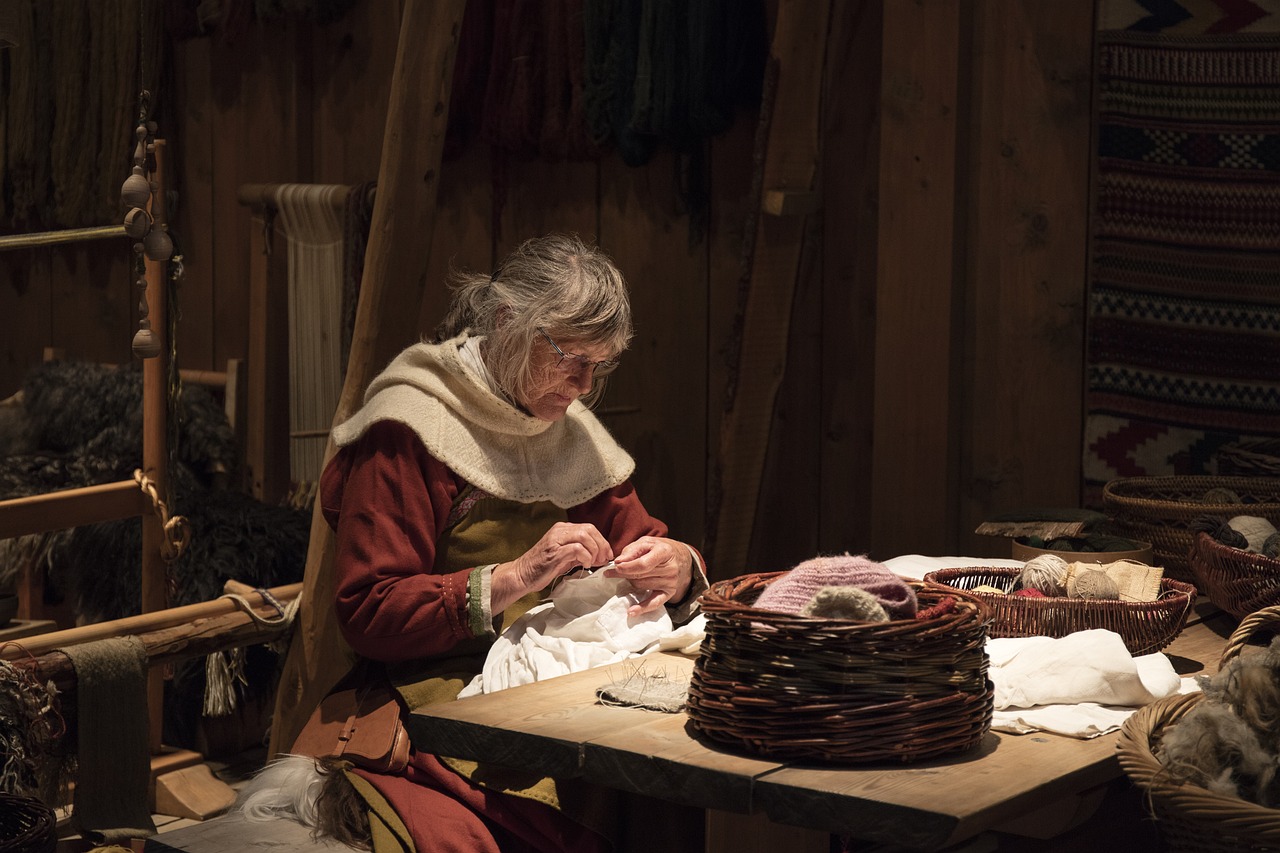
Beginner-Friendly Projects
When it comes to sewing, starting with can make all the difference in building confidence and skill. These projects are designed to be simple, yet rewarding, allowing kids and teens to see their creations come to life without feeling overwhelmed. Imagine the thrill of transforming a piece of fabric into something functional or decorative—it's like magic! Here are a few delightful projects that are perfect for those just beginning their sewing journey:
One of the most popular beginner projects is the simple pillowcase. This project not only introduces basic sewing techniques, such as straight stitching and turning corners, but it also results in a cozy item that can be personalized with fun fabrics. Kids can choose their favorite colors or patterns, making each pillowcase unique. Plus, they can use it for their own bed or gift it to a friend, adding a personal touch that enhances their sense of accomplishment.
Another fantastic project is the drawstring bag. This versatile accessory is perfect for carrying toys, gym clothes, or even snacks for a picnic. The drawstring bag project teaches essential skills like measuring, cutting, and sewing seams. It's also a great way to experiment with different fabric types and colors. The best part? It's incredibly practical! Kids will love using something they made themselves, which can be a huge confidence booster.
For those looking to add a bit of flair to their sewing repertoire, consider the fabric bookmarks. These are quick to make and provide a wonderful way to practice sewing skills without requiring a lot of fabric. Plus, they can be decorated with fun embellishments like buttons or embroidery, allowing kids to express their creativity. Imagine curling up with a good book and using a colorful bookmark that you crafted yourself—it’s a small but meaningful achievement!
As kids gain more experience, they might enjoy working on a simple tote bag. This project introduces more complex elements like handles and pockets, while still being manageable for beginners. A tote bag can be used for shopping, school, or as a reusable gift bag, making it a practical choice. Not to mention, it’s a great way for kids to learn about sustainability by creating something functional that reduces waste!
To help visualize these projects, here’s a quick comparison of the skills learned in each:
| Project | Skills Learned | Final Product |
|---|---|---|
| Pillowcase | Straight stitching, turning corners | Personalized pillowcase |
| Drawstring Bag | Measuring, cutting, sewing seams | Functional drawstring bag |
| Fabric Bookmark | Basic stitching, embellishing | Decorative bookmark |
| Tote Bag | Handles, pockets, advanced stitching | Reusable tote bag |
These projects not only hone sewing skills but also foster a sense of achievement and creativity. As children and teens complete each project, they'll be building not just their sewing skills but also their confidence and self-expression. So, gather those sewing supplies, and let the fun begin! Who knows? They might just discover a lifelong passion for sewing!
Q: What age is appropriate for kids to start sewing?
A: Generally, children aged 7 and up can start learning basic sewing skills, especially with adult supervision. Start with simple projects to build their confidence.
Q: What materials do I need to start sewing?
A: Essential materials include fabric, thread, needles, scissors, and a sewing machine (if available). For beginners, safety scissors and pre-cut fabric can make the process easier.
Q: How can I encourage my child to keep sewing?
A: Celebrate their achievements, no matter how small! Provide them with new projects, and consider joining them for sewing sessions to make it a fun, shared experience.

Fun Fabric Choices
When it comes to sewing, the fabric you choose can make all the difference in the world! It's like picking the right paint for your masterpiece; the right fabric can bring your project to life and make it truly special. Kids and teens often love vibrant colors and fun patterns, so why not let their imaginations run wild? Think about fabrics that not only look good but also feel good to work with. For beginners, cotton is a fantastic choice—it's easy to sew, comes in countless designs, and is forgiving for those learning the ropes. But don’t stop there! Consider exploring a variety of fabrics to keep things exciting.
Here are some fun fabric options that can help ignite creativity:
- Cotton Prints: These are perfect for all sorts of projects, from simple pillowcases to trendy tote bags. With floral, cartoon, and geometric designs, the options are endless!
- Fleece: Soft and warm, fleece is great for making cozy blankets or stuffed animals. Plus, it doesn’t fray, which makes it a fantastic choice for beginners.
- Denim: For those looking to create something a bit more robust, denim is a versatile fabric that can be used for bags, jackets, and even skirts.
- Canvas: Ideal for sturdy projects like backpacks or outdoor cushions, canvas comes in a variety of colors and prints.
- Muslin: A lightweight fabric that is perfect for practice projects. It allows young sewists to experiment without the fear of wasting expensive materials.
When selecting fabrics, it’s also important to consider the project’s purpose. Are you making a gift? A fun accessory? Or perhaps a cozy item for your own room? Each project may call for different fabric qualities. For instance, if you're creating a gift for a friend who loves animals, consider a fabric with cute animal prints. On the other hand, if you're making something for winter, a warm fleece fabric might be the perfect choice.
Don’t forget about the importance of texture! Mixing and matching different textures can add depth to any project. Imagine a soft fleece combined with a patterned cotton—what a delightful combination that would be! Encourage kids to touch and feel different fabrics, as this tactile experience can inspire their creativity and help them make informed choices.
Lastly, let’s talk about sustainability. In today’s world, it’s crucial to consider the environmental impact of our choices. Look for fabrics made from organic materials or those that are recycled. Upcycling old clothing into new projects is not only a fun challenge but also teaches kids about sustainability. So, the next time you’re at the fabric store or rummaging through your closet, keep an eye out for fabrics that tell a story and have a purpose.
In conclusion, the fabric choices available are as diverse as the projects they can become. By encouraging kids and teens to explore different types of fabrics, you’re not just teaching them to sew—you’re also helping them to express their individuality and creativity. So grab some fabric, unleash your imagination, and let the sewing adventures begin!
Q: What type of fabric is best for beginners?
A: Cotton is generally the best choice for beginners due to its ease of use and variety of patterns.
Q: Can I use old clothes for sewing projects?
A: Absolutely! Upcycling old clothes is a great way to be creative and sustainable.
Q: What is the difference between woven and knit fabrics?
A: Woven fabrics are made by weaving threads together, making them less stretchy, while knit fabrics are made by interlocking loops of yarn, giving them more stretch.
Q: How do I choose the right fabric for my project?
A: Consider the project's purpose, desired texture, and ease of sewing. Always feel the fabric and check if it matches your vision!

Seasonal Sewing Projects
When it comes to sewing, there’s no better way to celebrate the changing seasons than by creating your own festive projects! Seasonal sewing projects not only allow kids and teens to express their creativity but also help them connect with various holidays and traditions. Imagine the joy of crafting a custom Halloween costume or stitching up a cozy winter scarf—these activities can become cherished memories that last a lifetime.
One of the fantastic aspects of seasonal sewing is the variety of projects available. For example, during the spring, kids can make colorful flower pot covers or cute bunnies for Easter. In the summer, they might enjoy sewing beach bags or picnic blankets that they can use for family outings. As autumn rolls around, projects like pumpkin decorations or cozy flannel throws can be a hit. And let’s not forget winter, where sewing holiday ornaments or personalized gifts can bring a warm touch to the season.
Each season offers a unique opportunity to explore different themes and materials. For instance, spring and summer fabrics are often bright and cheerful, featuring florals and playful patterns, while autumn and winter may call for richer colors and cozier textures. By choosing the right fabrics, kids can enhance their projects and make them even more enjoyable. It’s like dressing up their creations in seasonal attire!
Here are some fun ideas for seasonal sewing projects:
- Spring: Create a fabric flower bouquet or a colorful Easter basket.
- Summer: Stitch a beach towel or a sun hat to enjoy the sunny days.
- Autumn: Make a patchwork table runner for Thanksgiving or cute felt leaves for decoration.
- Winter: Craft cozy mittens or festive holiday stockings to hang by the fireplace.
These projects are not only fun but also educational, as they teach kids about the significance of each season and the celebrations that come with them. Sewing can be a wonderful way to introduce children to cultural traditions, allowing them to create items that hold personal meaning. For instance, making a Diwali diya (lamp) or a Hanukkah menorah cover can help kids learn about different customs while developing their sewing skills.
Moreover, seasonal sewing projects can also be a great way to bond with family and friends. Organizing a sewing party to create decorations for a holiday can be a delightful experience. Everyone can contribute their ideas, and together, they can craft pieces that make the season feel even more special. Imagine a group of kids working together, laughing, and sharing stories while they sew—it's a perfect blend of creativity and camaraderie!
In conclusion, seasonal sewing projects offer a fantastic opportunity for kids and teens to express their creativity while learning valuable skills. By incorporating the themes of each season into their sewing endeavors, they can create meaningful items that celebrate life’s special moments. So, gather your supplies, choose a project that excites you, and let the sewing adventures begin!
Q: What age is appropriate for kids to start sewing?
A: Children as young as 5 can start sewing with supervision, especially with simple projects. As they grow older, they can take on more complex tasks.
Q: What basic tools do we need for kids to start sewing?
A: Essential tools include safety scissors, needles, thread, fabric, and a sewing machine for older kids. Always prioritize safety!
Q: How can I encourage my child to sew more?
A: Engage them with fun projects, set up a sewing corner, or join them in sewing activities to make it a shared experience.
Q: Are there any online resources for kids to learn sewing?
A: Yes! There are many tutorials and sewing blogs designed for kids. Websites like YouTube have countless videos that can guide them through various projects.
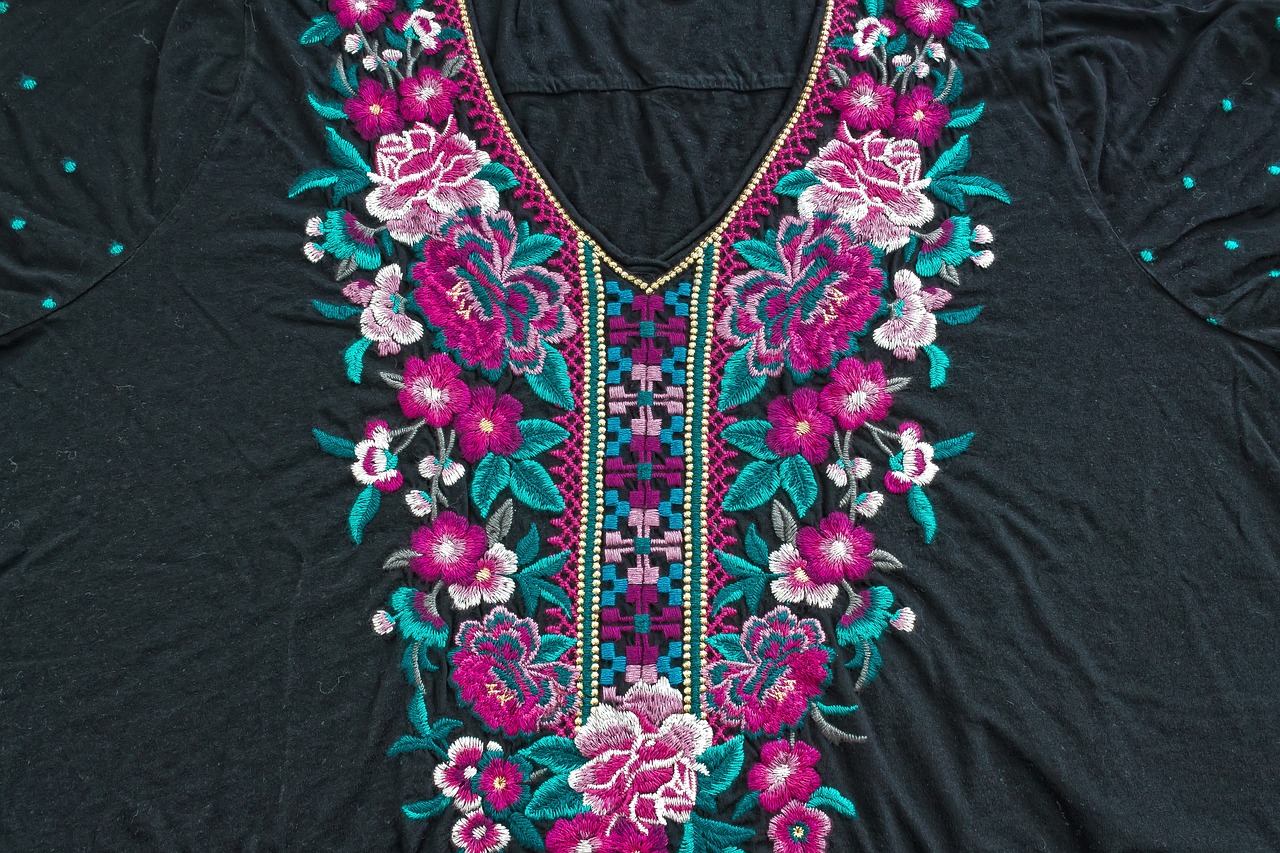
Upcycling and Sustainability
In today's world, where environmental awareness is more important than ever, teaching kids about sustainability through sewing can be both fun and rewarding. Upcycling, which involves transforming old or discarded materials into something new and useful, is an excellent way to encourage creativity while promoting environmental responsibility. Imagine taking a worn-out pair of jeans and turning them into a trendy bag or a colorful patchwork quilt! Not only does this process reduce waste, but it also gives children a sense of accomplishment as they create something unique from materials that might otherwise end up in a landfill.
One of the most exciting aspects of upcycling is the opportunity for kids to explore their imagination. They can experiment with various fabrics and textures, combining old clothing, sheets, or even curtains to create one-of-a-kind projects. This hands-on approach not only fosters creativity but also helps children develop critical thinking skills as they problem-solve and figure out how to repurpose items effectively.
Here are a few ideas for upcycling projects that kids and teens can enjoy:
- Tote Bags: Transform old t-shirts into stylish tote bags. Simply cut and sew the bottom, and voila!
- Patchwork Pillows: Use scraps from various fabrics to create colorful patchwork pillows that brighten up any room.
- Fabric Bunting: Cut triangles from old fabric and sew them together to make festive bunting for parties or room decor.
- Denim Coasters: Repurpose old jeans into durable coasters, adding a rustic touch to your home.
Upcycling also opens up discussions about the importance of resourcefulness. In a world where fast fashion dominates, teaching kids to think critically about their consumption habits can instill values that last a lifetime. They learn to appreciate the story behind each piece of fabric and understand that sustainability doesn't mean sacrificing style or fun.
Moreover, engaging in upcycling projects can be a fantastic way for families to bond. Imagine spending a Saturday afternoon rummaging through old clothes and fabric remnants, brainstorming ideas, and working together on a project. This not only strengthens family ties but also creates lasting memories while imparting valuable lessons about sustainability and creativity.
Incorporating upcycling into sewing projects is not just about making something new; it's about fostering a mindset of innovation and responsibility. As children learn to view materials in a new light, they become more aware of their impact on the environment. This awareness can inspire them to make more conscious choices in their everyday lives, whether it’s through sewing or other creative outlets.
In conclusion, upcycling and sustainability in sewing projects offer a fantastic opportunity for kids and teens to express their creativity while learning valuable life skills. By encouraging them to think outside the box and make something beautiful from what they already have, we are not only nurturing their artistic abilities but also instilling a sense of responsibility towards our planet. So, gather those old clothes, unleash your creativity, and let the upcycling adventures begin!
Q: What is upcycling?
A: Upcycling is the process of transforming waste materials or unwanted products into new materials or products of better quality or environmental value.
Q: Why is sewing important for kids?
A: Sewing helps develop fine motor skills, boosts creativity, and teaches patience and problem-solving. It also provides a sense of accomplishment when they complete a project.
Q: How can I start upcycling with my kids?
A: Begin by gathering old clothes or fabric scraps. Choose a simple project, such as making tote bags or pillows, and guide your kids through the process. Encourage them to brainstorm ideas and express their creativity!
Q: Are there specific tools needed for upcycling projects?
A: Basic sewing tools like needles, thread, scissors, and a sewing machine (if available) are essential. Fabric glue can also be helpful for no-sew projects.
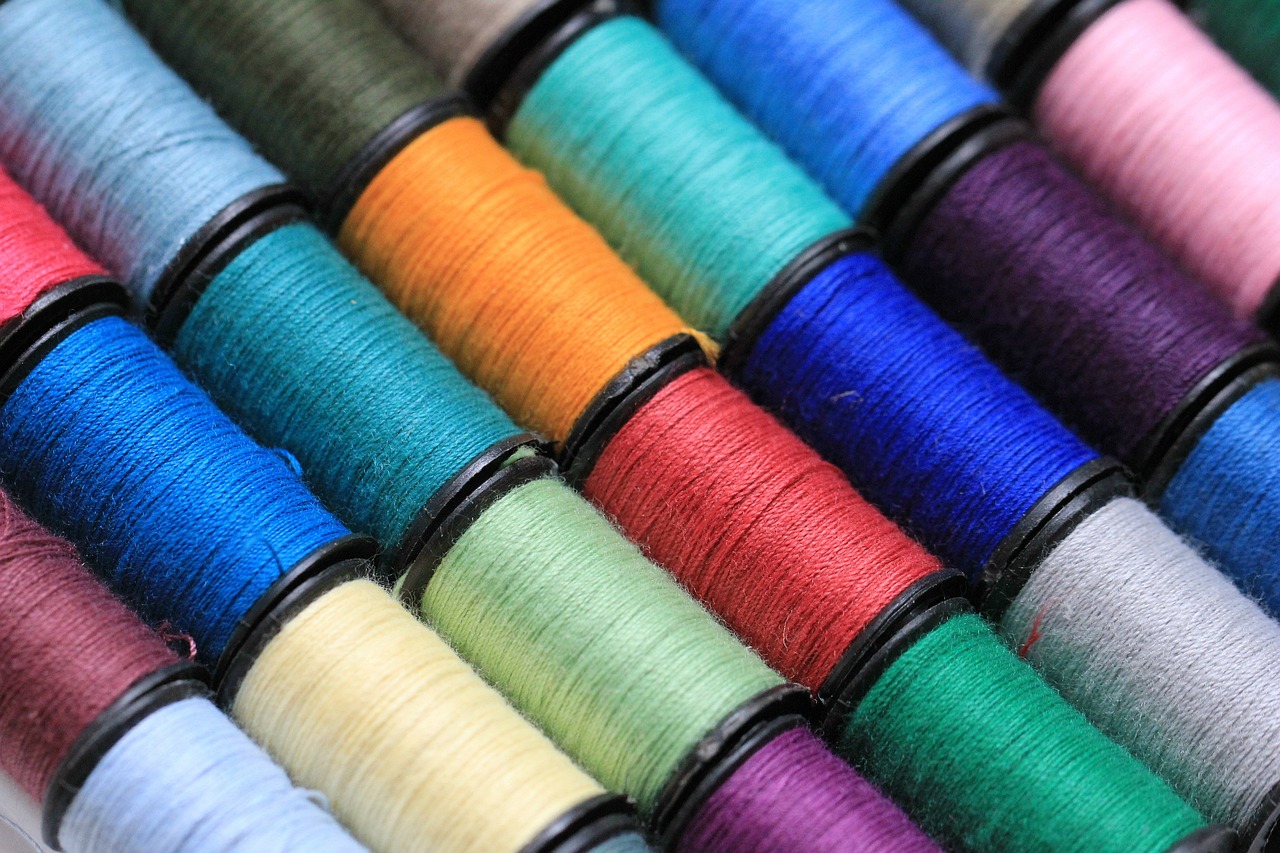
Group Sewing Activities
Group sewing activities can be an absolute blast, transforming a simple craft session into a lively gathering filled with laughter, creativity, and collaboration. Imagine a room buzzing with excitement as children and teens come together to create something special. Not only does sewing in groups foster a sense of community, but it also allows participants to learn from one another, share tips, and inspire each other's creativity. It's like a sewing party where everyone contributes to the fun!
One of the best aspects of group sewing is that it encourages teamwork. When kids work together on a project, they learn how to communicate their ideas and support one another. This can be particularly beneficial for developing social skills. For instance, they might decide to create a large quilt, where each person contributes a square that reflects their personality. This not only results in a beautiful piece of art but also serves as a lasting memory of their collaboration.
Here are a few engaging group sewing project ideas that can be easily organized:
- Quilt Squares: Each participant can design and sew their own square, which will later be pieced together into a quilt.
- Fabric Banners: Create colorful banners for a school event or a community celebration, with each member contributing a section.
- DIY Tote Bags: A simple project where everyone can personalize their own tote bag, perfect for carrying books or craft supplies.
To make these activities even more fun, consider organizing a sewing challenge! You could set a timer and see who can create the most unique item within a certain timeframe. This adds an element of excitement and friendly competition, encouraging participants to think outside the box. Plus, it’s a great way to showcase their creativity and skills!
Don't forget to prepare a cozy sewing environment. Set up tables with enough space for everyone, and ensure there are ample supplies, such as fabric, thread, and sewing machines. It’s also a good idea to have some snacks on hand—after all, a little fuel can keep the creativity flowing! Remember, the goal is to have fun while creating something special together.
Incorporating group sewing activities into learning environments or community centers can also be a fantastic way to promote not just sewing skills, but also environmental awareness. For example, you could organize a project where participants upcycle old clothing into new items, teaching them about sustainability while having a great time. This not only sparks their creativity but also instills a sense of responsibility towards the environment.
In conclusion, group sewing activities are not just about creating items; they are about building connections, sharing experiences, and nurturing creativity. Whether it’s a casual gathering with friends or a structured class, the joy of sewing together can lead to lifelong friendships and unforgettable memories. So gather your materials, invite some friends over, and let the sewing magic begin!
Q: What age is suitable for group sewing activities?
A: Group sewing activities can be enjoyed by children as young as 5, with appropriate supervision. However, the complexity of the projects can be adjusted according to the age and skill level of the participants.
Q: How can I ensure safety during sewing activities?
A: Safety should always be a priority. Make sure to use child-safe scissors, supervise the use of sewing machines, and provide clear instructions on handling needles and sharp tools.
Q: What if someone is new to sewing?
A: That’s perfectly fine! Group sewing activities are a great way for beginners to learn. Pair them with more experienced sewers who can guide them through the process.
Q: Can I organize sewing activities online?
A: Absolutely! Virtual sewing meetups can be organized using video conferencing tools. Participants can work on their projects from home while sharing tips and ideas in real-time.
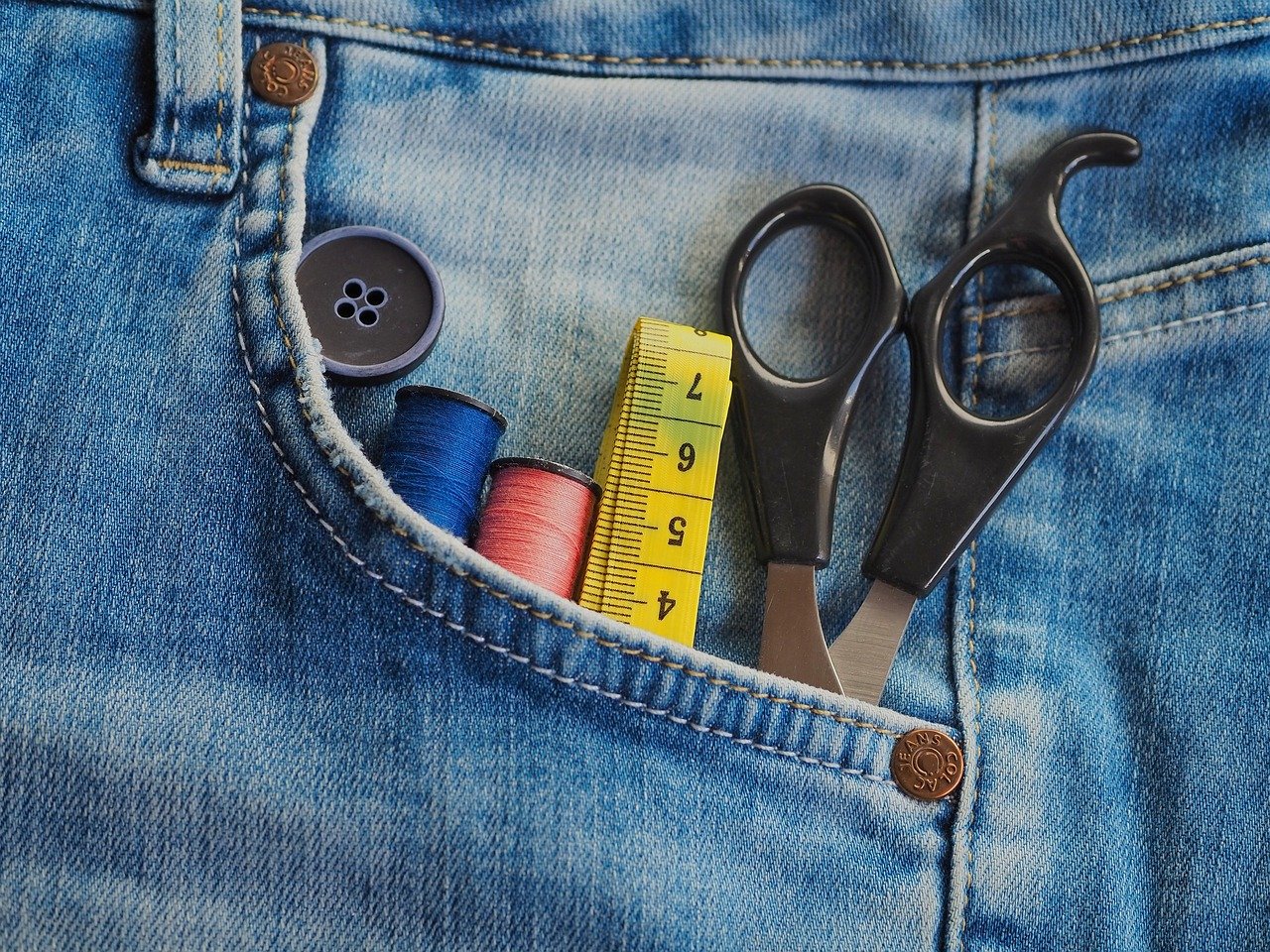
Advanced Projects for Teens
As teens grow and their sewing skills develop, they often crave more challenging projects that allow them to express their individuality and creativity. These advanced sewing projects not only build on the fundamental skills they've already acquired but also introduce new techniques that can elevate their crafting experience. Imagine transforming a simple piece of fabric into a stunning garment or a unique accessory that reflects their personal style! It's an exciting journey that can lead to a sense of accomplishment and pride.
One fantastic project idea is creating a custom clothing item. Teens can start with a basic pattern and modify it to suit their taste. Whether it's adding pockets, changing the hemline, or even experimenting with color blocking, the possibilities are endless. This project not only enhances their pattern-reading skills but also encourages them to think critically about design and fit. Plus, wearing something they made themselves? That's a confidence booster!
Another engaging project is sewing a bag or backpack. This is not just a practical item; it serves as a canvas for their creativity. They can choose fun fabrics, add embellishments, or even incorporate patches that represent their interests. Here’s a simple breakdown of what this project could involve:
| Steps | Description |
|---|---|
| 1. Choose Fabric | Select durable fabric that reflects personal style. |
| 2. Create a Pattern | Use existing bags as templates or design a custom pattern. |
| 3. Cut and Assemble | Cut the fabric pieces and sew them together, adding pockets if desired. |
| 4. Add Finishing Touches | Embellish with patches, buttons, or personalized designs. |
For those who are ready to take on even more complex projects, consider making a quilt. Quilting can be a rewarding challenge that teaches patience and precision. Teens can start with simple squares and gradually work their way up to more intricate patterns. Not only does this project require sewing skills, but it also encourages planning and organization, as they will need to select fabrics, calculate measurements, and piece everything together. Plus, the finished product can be a cherished keepsake or a cozy addition to their room.
Lastly, don't forget about home decor projects. Sewing pillow covers, curtains, or even table runners can be a fun way to personalize a space. Teens can explore different styles and fabrics, allowing them to experiment with colors and textures. This not only enhances their sewing skills but also gives them a sense of ownership over their environment.
In conclusion, advanced sewing projects for teens offer a fantastic opportunity to explore creativity, develop new skills, and create meaningful items. The journey through these projects is about more than just sewing; it's about self-expression, problem-solving, and the joy of making something truly unique. So, gather those fabrics, fire up the sewing machine, and let the creativity flow!
Q1: What are some good beginner sewing projects for teens?
A1: Great beginner projects include simple tote bags, pillowcases, or basic skirts. These projects help build confidence and foundational skills.
Q2: How can I encourage my teen to sew more?
A2: Introduce them to fun projects that align with their interests, provide them with creative freedom, and perhaps join them in sewing sessions for added motivation.
Q3: What sewing machine is best for teens?
A3: Look for a machine that is user-friendly, with features like automatic threading and adjustable stitch settings. Brands like Brother and Singer offer great options for beginners.
Q4: Are there online resources for learning advanced sewing techniques?
A4: Absolutely! Websites like YouTube, Craftsy, and various sewing blogs provide tutorials and patterns that can help teens learn at their own pace.
Frequently Asked Questions
- What age is appropriate for kids to start sewing?
Kids can start sewing as young as 5 or 6 years old, depending on their interest and fine motor skills. Simple projects like hand-sewn felt shapes or basic stitching can be a great introduction!
- What basic tools do I need for kids to start sewing?
Essential tools include safety scissors, needles (preferably blunt-tipped for younger kids), thread, fabric, and a sewing machine if they’re ready for it. Don’t forget to have a pin cushion and measuring tape handy!
- Are there sewing projects that don’t require a sewing machine?
Absolutely! Many beginner projects can be done by hand, such as pillowcases, simple bags, or even plush toys. Hand sewing can be a great way for kids to learn the basics!
- How can I help my child choose fabric for their projects?
Encourage them to pick fabrics that reflect their personality! Bright colors, fun patterns, or even themed fabrics can make the project more exciting. Just make sure the fabric is easy to work with, like cotton!
- What are some fun seasonal sewing projects for kids?
Seasonal projects can include making holiday decorations, such as Halloween costumes, Christmas ornaments, or summer tote bags. These projects can help kids celebrate the seasons while honing their skills!
- How can sewing promote sustainability for kids?
Sewing can teach kids about upcycling! They can create new items from old clothes or fabric scraps, reducing waste and encouraging creativity. It’s a fun way to learn about taking care of our planet!
- What are some group sewing activities for kids?
Group activities can include making quilts for charity, sewing pillowcases, or even creating matching outfits. These projects foster teamwork and allow kids to learn from each other in a fun environment!
- What advanced projects are suitable for teens?
Teens can tackle more complex projects like making their own clothing, bags, or even home decor items. These projects challenge their skills and allow for greater self-expression!



















